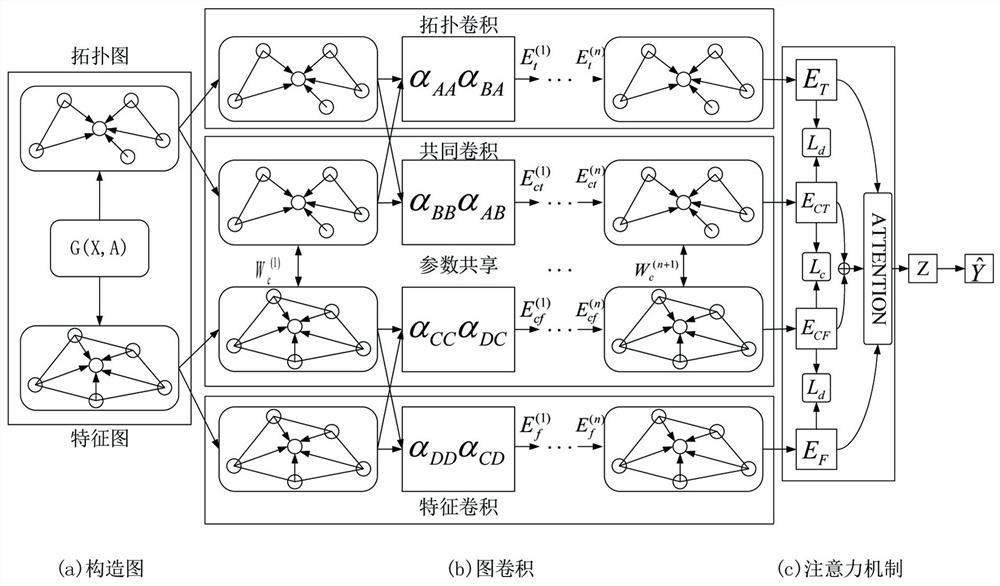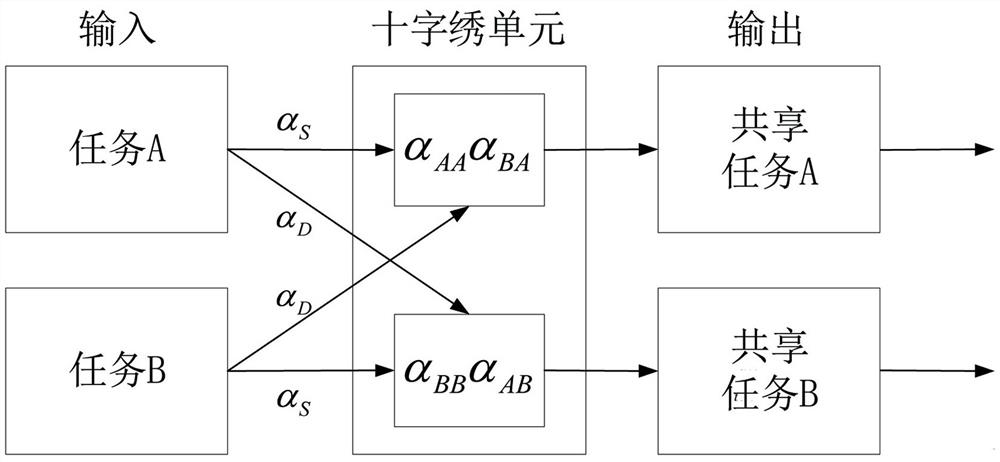Graph classification method based on adaptive multi-channel cross graph convolutional network
A technology of convolutional network and classification method, applied in the field of graph classification based on adaptive multi-channel cross-graph convolutional network, which can solve the problems of FCN flexibility limitation and nodes being far apart.
- Summary
- Abstract
- Description
- Claims
- Application Information
AI Technical Summary
Problems solved by technology
Method used
Image
Examples
Embodiment
[0044] refer to figure 1 , a graph classification method based on an adaptive multi-channel cross-graph convolutional network, comprising the following steps:
[0045] 1) Construct an initial graph based on the node feature matrix X:
[0046] Use G(X,A) to represent the graph, where the node feature matrix n represents the number of nodes in the graph, d represents the feature dimension of each node, is a symmetric adjacency matrix of n nodes, representing the topological structure between nodes, when A ij = 1, it means there is an edge between node i and node j, otherwise A ij = 0, indicating that there is no edge between node i and node j, use cosine similarity to obtain the similarity matrix Then select the first k similar node pairs for each node to set the edge, and finally get the adjacency matrix A f , and then get the input map in the feature space (X,A f ); similarly, for topological spaces, there is the original input graph Gt=(X t ,A t ), where X t =X,A ...
PUM
 Login to View More
Login to View More Abstract
Description
Claims
Application Information
 Login to View More
Login to View More - R&D
- Intellectual Property
- Life Sciences
- Materials
- Tech Scout
- Unparalleled Data Quality
- Higher Quality Content
- 60% Fewer Hallucinations
Browse by: Latest US Patents, China's latest patents, Technical Efficacy Thesaurus, Application Domain, Technology Topic, Popular Technical Reports.
© 2025 PatSnap. All rights reserved.Legal|Privacy policy|Modern Slavery Act Transparency Statement|Sitemap|About US| Contact US: help@patsnap.com



